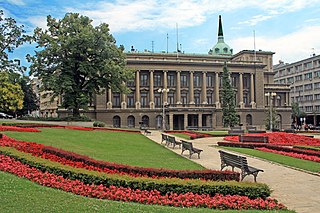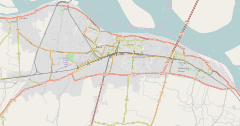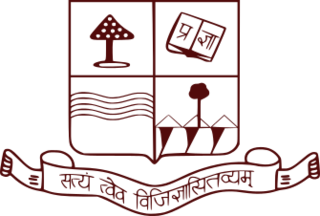
The Rashtrapati Bhavan is the official home of the President of India located at the Western end of Rajpath in New Delhi, India. Rashtrapati Bhavan may refer to only the 340-room main building that has the president's official residence, including reception halls, guest rooms and offices, also called the mansion; it may also refer to the entire 130-hectare Presidential Estate that additionally includes huge presidential gardens, large open spaces, residences of bodyguards and staff, stables, other offices and utilities within its perimeter walls. In terms of area, it is the largest residence of any head of state in the world.
Raj Bhavan is the official residence of the Governor of Telangana and Andhra Pradesh located in the city of Hyderabad, India. It is located at Somajiguda adjacent to Hussain Sagar lake.
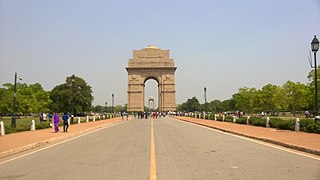
Rajpath is a ceremonial boulevard in New Delhi, India, that runs from Rashtrapati Bhavan on Raisina Hill through Vijay Chowk and India Gate, National War Memorial (India) to National Stadium, Delhi. The avenue is lined on both sides by huge lawns, canals and rows of trees. Considered to be one of the most important roads in India, it is where the annual Republic Day parade takes place on 26 January. Janpath crosses the road. Rajpath runs in east-west direction. Roads from Connaught Place, the financial centre of Delhi, run into Rajpath from north.
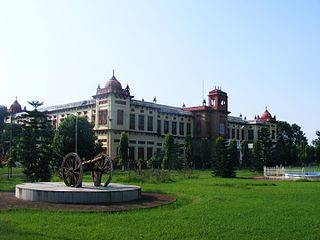
Patna Museum is the state museum of the Indian state of Bihar. Started on 3 April 1917 during the British Raj to house the historical artefacts found in the vicinity of Patna, it is in the style of Mughal and Rajput architecture and is known locally as the Jadu Ghar.

Patna High Court is the High Court of the state of Bihar. It was established on 3 February 1916 and later affiliated under the Government of India Act 1915. The court is headquartered in Patna, the administrative capital of the state.

Raj Bhavan is the official residence of the Governor of West Bengal, located in the capital city Kolkata. Built in 1803, it was known as Government House before the independence of India.
Raj Bhavan is the official residence of the Governor of Arunachal Pradesh. It is located in the capital city of Itanagar, Arunachal Pradesh. The present Governor of Arunachal Pradesh is Padmanabha Acharya.
Sir Ganesh Dutt(a) Singh was an Indian lawyer, educationist and administrator during the British Raj. He did much to improve education and health services in the state of Bihar and Orissa before the independence of India from Britain. Dutta made generous donations from his earnings and personal property for the development of educational institutions, such as the Radium Institute in Patna Medical College, Darbhanga Medical College and Hospital, Ayurvedic College and schools for the blind and deaf. A short film based on the life and works of Dutta was made by Prakash Jha.
Bihar is a state situated in Eastern India. It is surrounded by West Bengal to the east, Uttar Pradesh to the west, Jharkhand to the south and Nepal to the north.
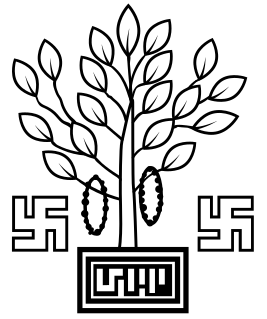
The Bihar Legislative Assembly, also known as the Bihar Vidhan Sabha, is the lower house of the bicameral legislature of the Indian state of Bihar.

1, Aney Marg in Patna is the official residence of the Chief Minister of Bihar. It has been named after Madhav Shrihari Aney, the Maharashtra born politician,who was also the state’s second post-Independence Governor. The sprawling fields surrounding the bungalow have been planted with 160 herbal and aromatic plants.

Gandhi Maidan or Gandhi Maidan Marg is one of the most important thoroughfares in Patna, India. It is a historical place and is considered as a landmark of the city. Gandhi Maidan is the main market and commercial area of Patna with Ashok Rajpath which starts from Gandhi Maidan and Dak Bungalow Crossing and Bailey Road besides Frazer Road, Exhibition Road, Boring Road, and Boring Canal Road. There are many important institutes that have developed around the area of Gandhi Maidan.
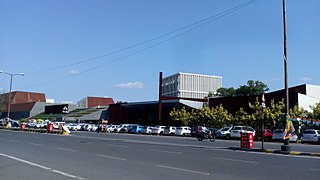
Bailey Road is a road and neighbourhood in Patna, India. It connects Patna with Danapur. It roughly starts from Income Tax Golambar and ends in Danapur, running through the heart of the city. It is one of the most important roads in the city. Many important landmarks like Patna High Court, Patna Women's College, Patna Secretariat, Patna Zoo, Patna Airport, Bihar Museum etc. are situated beside or near to this road. Bailey Road was officially renamed as Jawahar Lal Nehru Marg, but this road is still widely known as Bailey Road. This area is served by Shastrinagar Police Station of Patna Police.
The Wheeler Senate Hall is a convention centre of the Patna University situated in the heart of Ashok Rajpath, Patna.
Sir Henry Wheeler, was the Governor of Bihar and Orissa from 12 April 1922 to 6 April 1927. He was a member of the Imperial Civil Service appointed in 1889 and served in Bengal. He was also a member of Council of India from 1927 to 1937.

Patliputra University (PPU) is a collegiate public state university located in Patna, Bihar, India. It was established by an act of the state legislature in 2018. As a collegiate university, its main functions are divided between the academic departments of the university and affiliated colleges. The university has 125 affiliated colleges including twenty-five constituent colleges, two engineering colleges and a dozen pharmacy colleges spread over two districts, viz. Patna and Nalanda.
